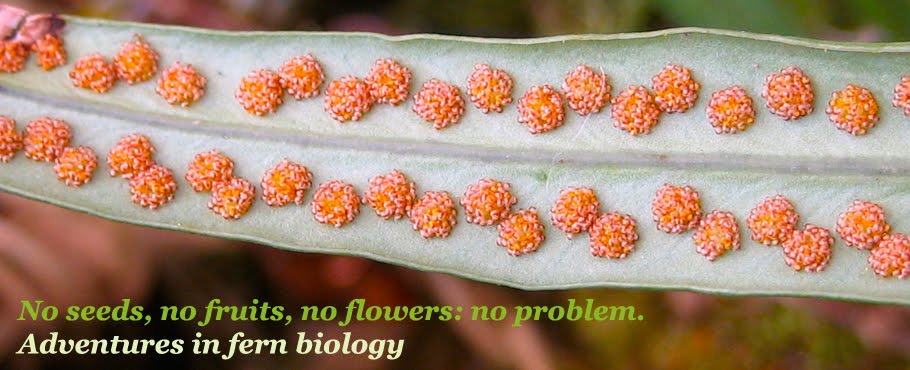My first field trip of the summer field season was, once again, to the
Wisconsin Dells. This beautiful area boasts sandstone-bluff-lined river channels that are perfect for canoeing and kayaking, which is a great way to explore the cliff ferns and islands that dot the river channels. This year we spent some time wandering around Blackhawk Island, just upriver from the
Upham Woods Outdoor Learning Center, which was kind enough to lend us canoes. The island has many sandstone cliffs, and the horizontal bedding planes produce great ledges for ferns to perch:
We also came across a few tipped-up old trees, providing fertile habitat for ferns and perhaps shelter for critters.
Among the many species of ferns that can be found on Blackhawk Island are several Dryopteris, and D. intermedia is particularly flush here. You can see its habit and sori here, as well as the sori of D. marginalis, which is also abundant in this area because of the sandy, rocky soils.
There are also angiosperms, of course, and this was a particularly cute little Sanguinaria, or bloodroot:


















